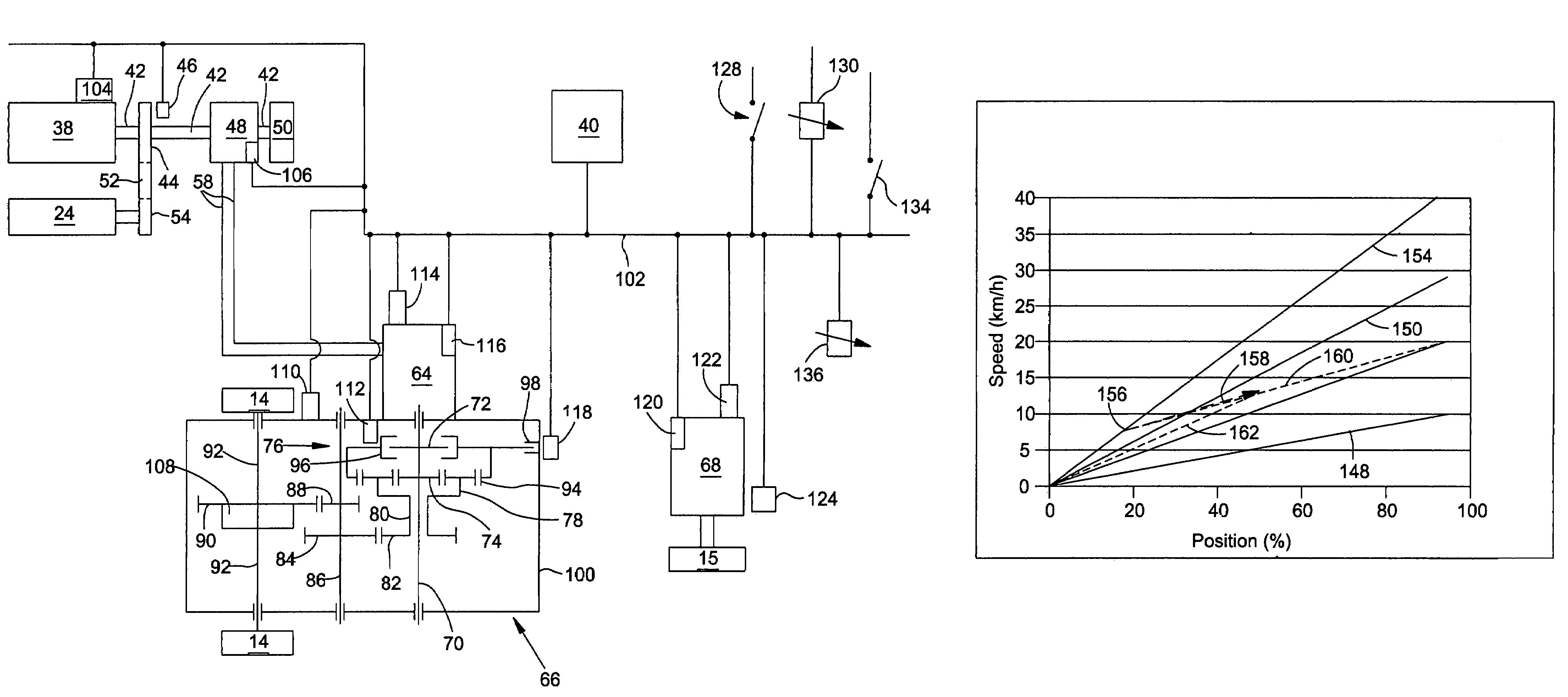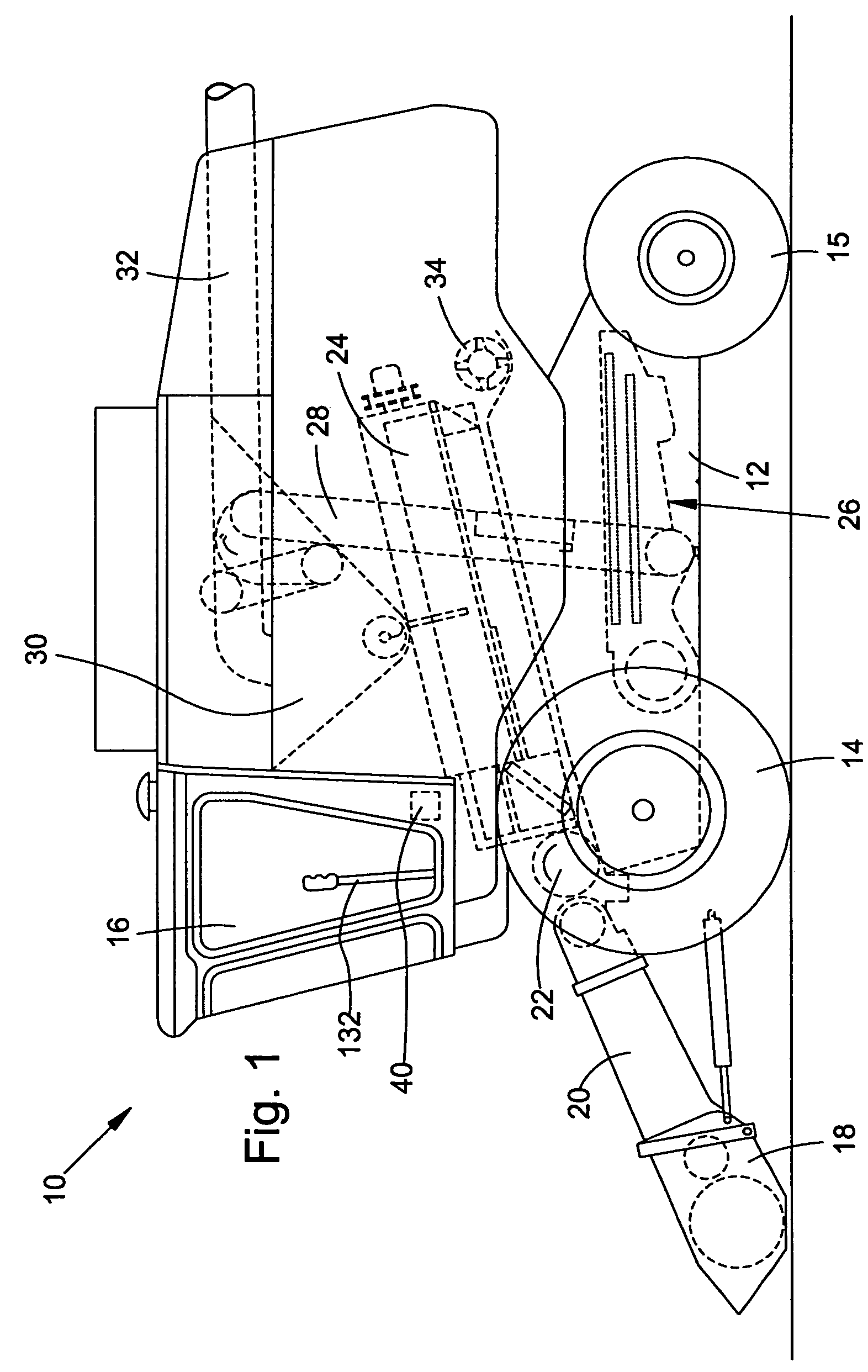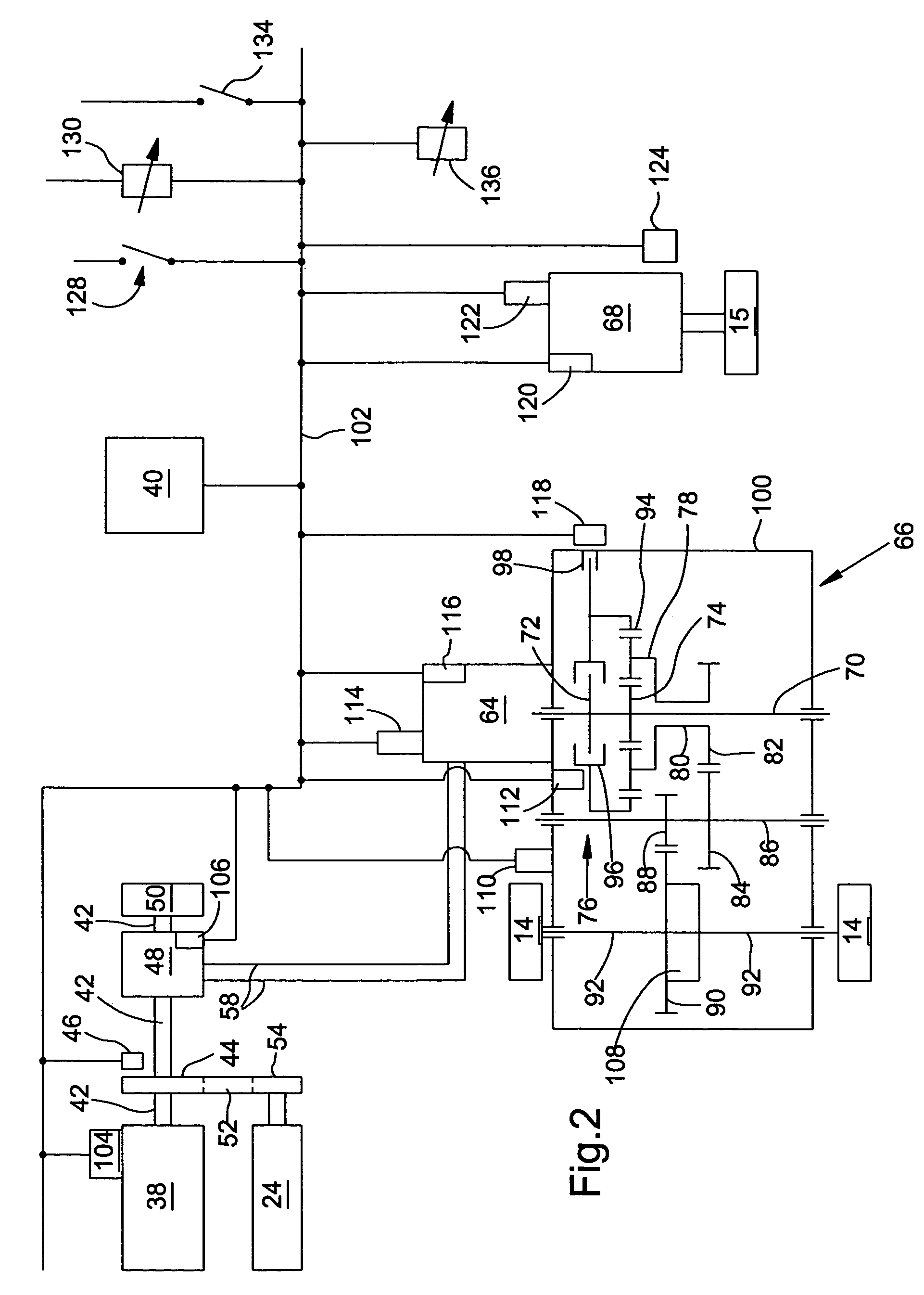Variable resolution single lever speed control for a hydrostatic transmission
a technology of hydrostatic transmission and variable resolution, which is applied in the direction of motor/generator/converter stopper, gearing, dynamo-electric converter control, etc., can solve the problems that the propelling speed of the machine cannot always be controlled as sensitively as desired, and the machine has to stop, etc., to achieve smooth acceleration of the machine, small slope, and optimal resolution
- Summary
- Abstract
- Description
- Claims
- Application Information
AI Technical Summary
Benefits of technology
Problems solved by technology
Method used
Image
Examples
Embodiment Construction
[0017]FIG. 1 shows a self-propelled agricultural working machine 10 in the form of a combine comprising a supporting structure 12 having ground engaging means 14, 15 in the form of wheels extending from the supporting structure. Instead of wheels, tracks could be used. The operation of the working machine 10 is controlled from operator's cab 16. A harvesting platform 18 is used for harvesting a crop and directing it to a feederhouse 20. The harvested crop is directed by the feederhouse 20 to a beater 22. The beater 22 directs the crop upwardly through an inlet transition section to an axial crop processing unit 24. The crop processing unit 24 threshes and separates the harvested crop material. Grain and chaff fall through grates on the bottom of the unit 24 to a cleaning system 26. The cleaning system 26 removes the chaff and directs the clean grain to a clean grain elevator 28. The clean grain elevator 28 deposits the clean grain in a grain tank 30. The clean grain in the tank 30 c...
PUM
 Login to View More
Login to View More Abstract
Description
Claims
Application Information
 Login to View More
Login to View More - R&D
- Intellectual Property
- Life Sciences
- Materials
- Tech Scout
- Unparalleled Data Quality
- Higher Quality Content
- 60% Fewer Hallucinations
Browse by: Latest US Patents, China's latest patents, Technical Efficacy Thesaurus, Application Domain, Technology Topic, Popular Technical Reports.
© 2025 PatSnap. All rights reserved.Legal|Privacy policy|Modern Slavery Act Transparency Statement|Sitemap|About US| Contact US: help@patsnap.com



